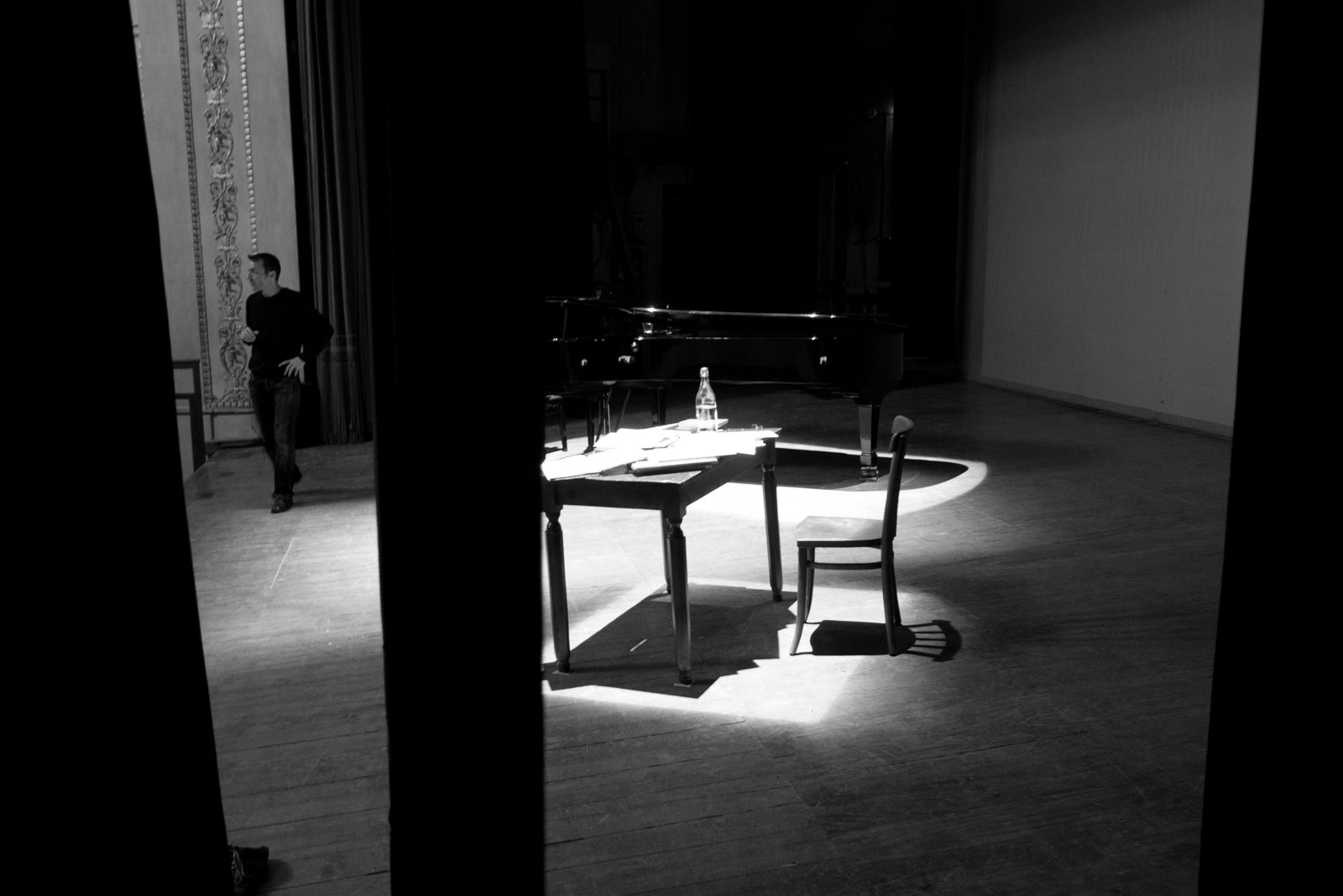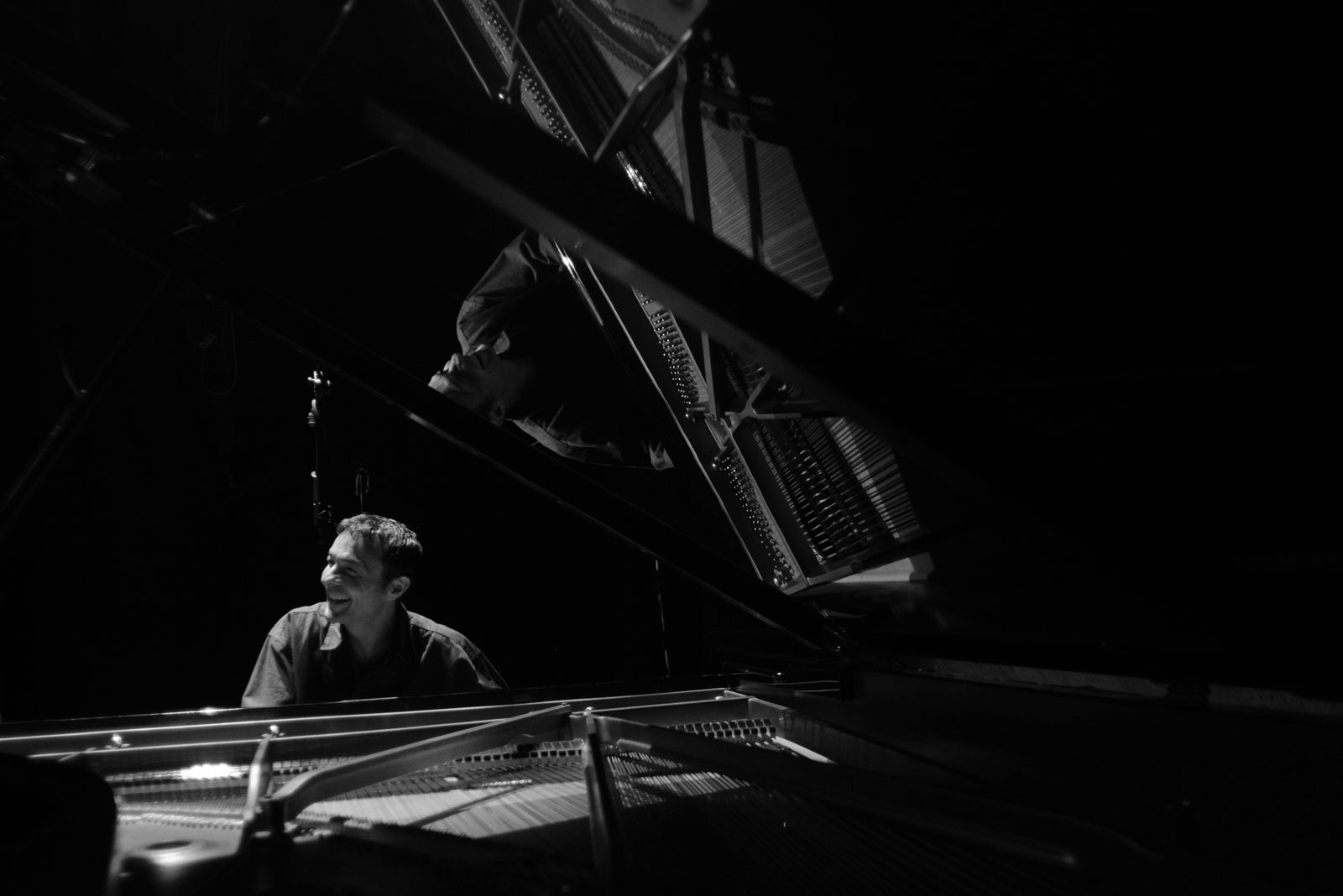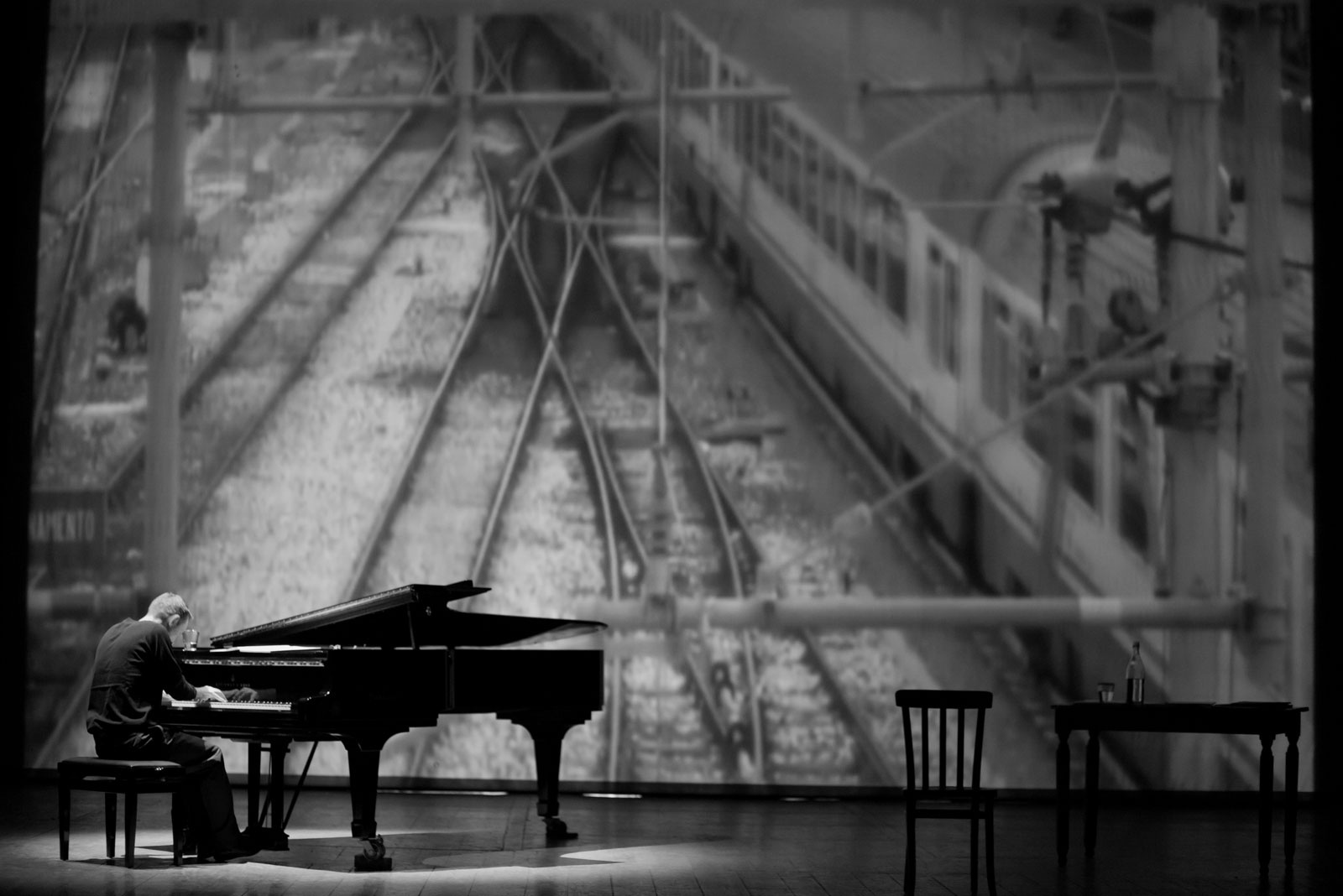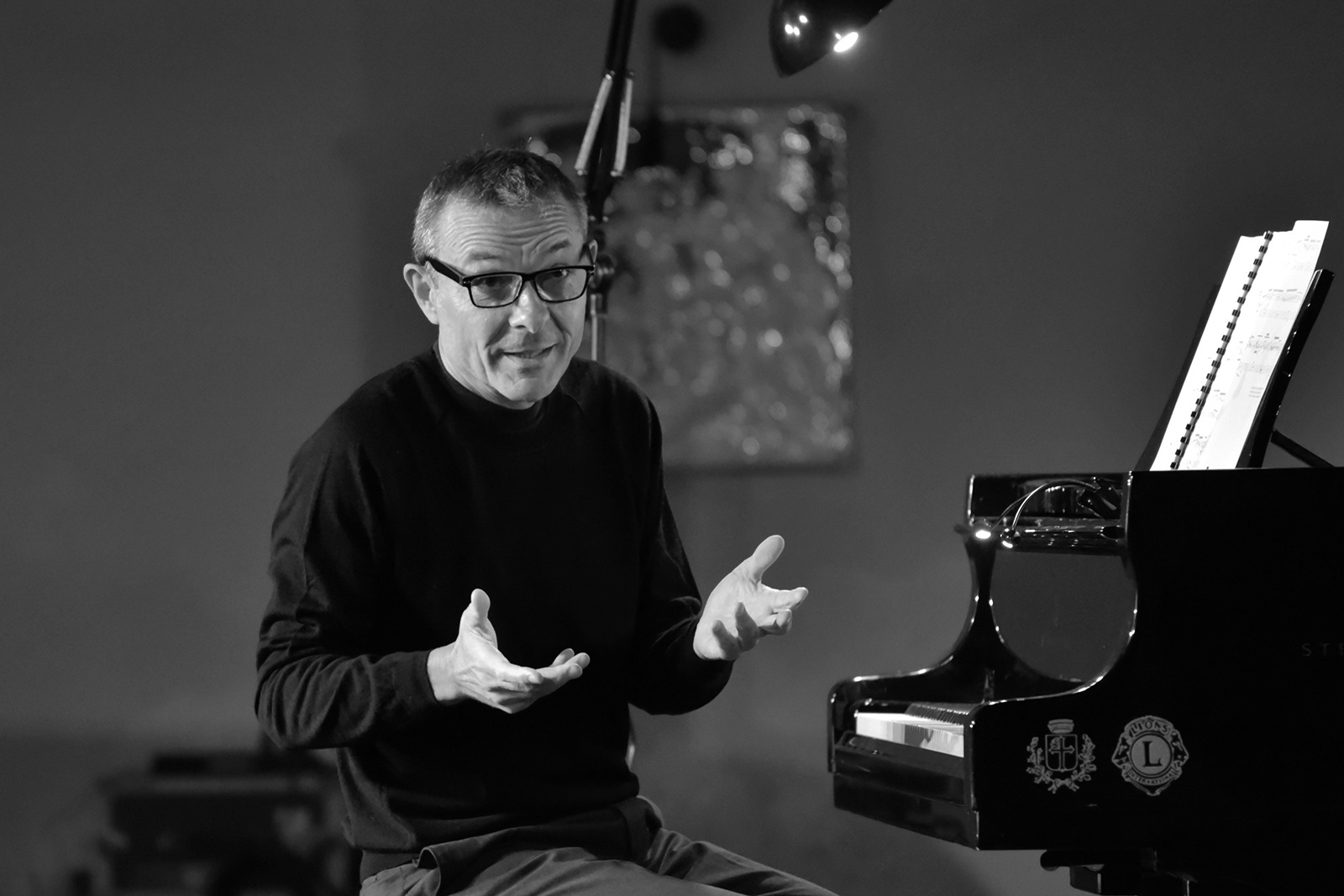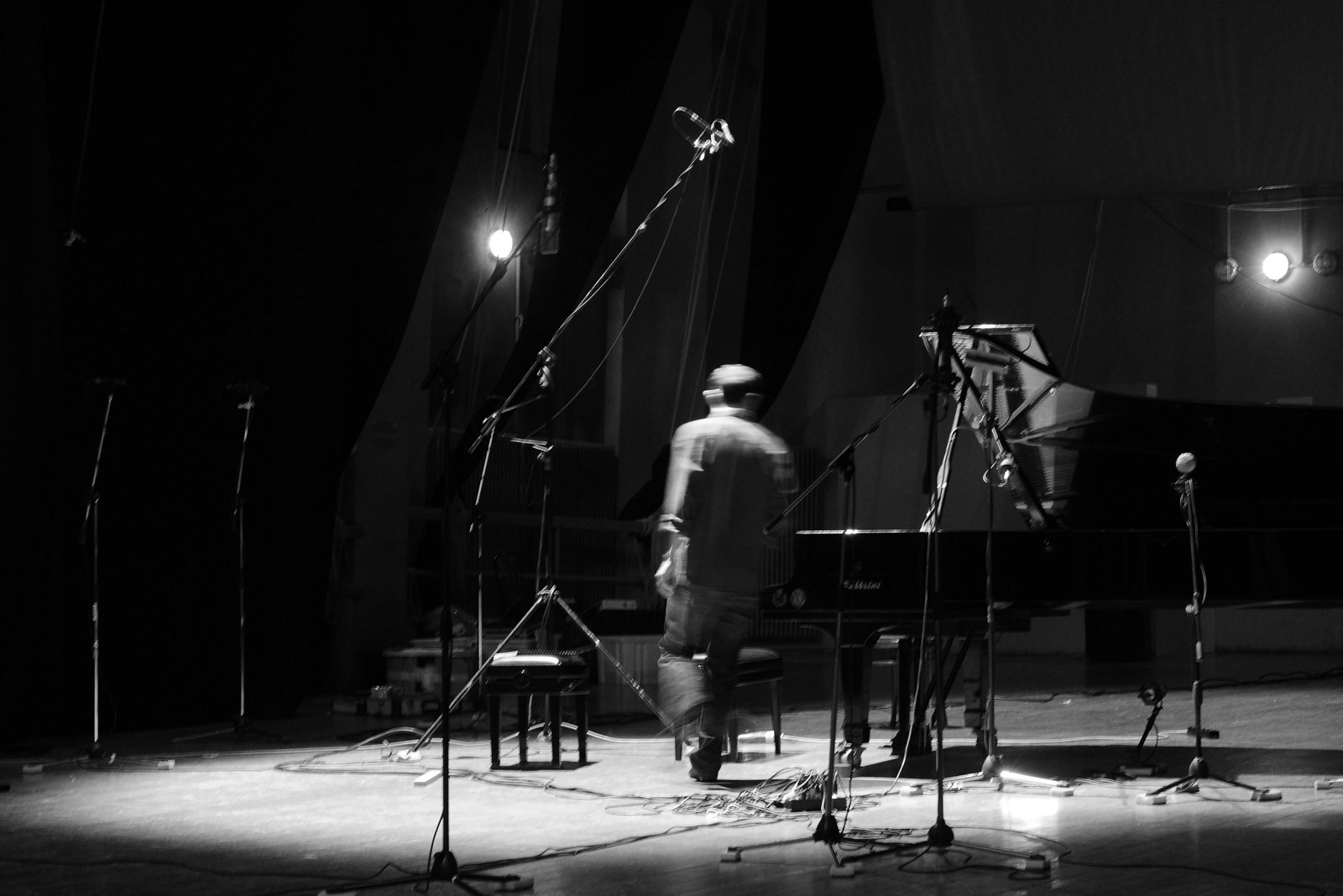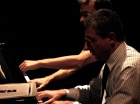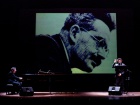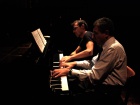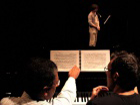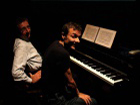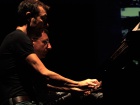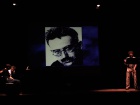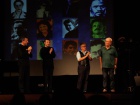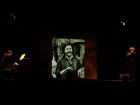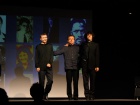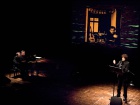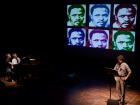- The Show
- The Photos
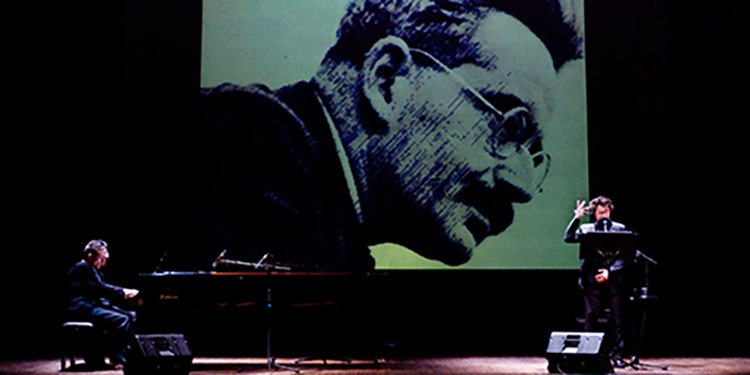
Duo Clavier (P. Dirani, M. Landi) four hand piano
Matteo Belli narrator
Script by Stefano Tassinari
Visul support by Luca Gavagna
Music by W. A. Mozart: Carl Czerny’s (1827) transcription of Requiem K. 626
Requiem, a score for shattered voices
- The Show
- The Photos
The Show
The show deals with a “modern” interpretation of W. A. Mozart’s Requiem K. 626 original transcription for four-hand piano by Carl Czerny (1791-1857), pianist and composer. This work was first published on 10 October 1827 by Anton Diabelli and Co. Requiem, a score for shattered voices, has been devised with the purpose to blend intimately the subject-matter of a two-century old work (that is a remembrance prayer devoted to dead people) and the need on one hand to make it suitable to larger audiences through theatrical staging, and on the other to transfer its highly emotional influence to spectators. Under the layman point of view, it offers a recollection prayer concerning several symbolic victims whose deaths were caused by wars and inconsistencies throughout the twentieth century, the span of time in human history, perhaps, with the highest casualties toll. The sections the Requiem consists of follow a particular musical trail enfolding and extending through twelve stories written by Stefano Tassinari and read by actor Matteo Belli. Each of these stories is a monologue; they focus on the misfortunes of those artists and intellectuals who happened to be the victims, either directly or indirectly, of the authoritarian and totalitarian regimès that spread through the world during the 1900s. Tassinari has attempted to put himself in the shoes of such unfortunate people, trying to capture and make his own the sufferences they must have gone through in their last minutes alive. In some cases they were just brutally murdered; others killed themselves for fear of the endless pain that was certainly awaiting them. Many more appeared to have died of natural deaths, although the beatings and torture they had to undergo while held captives were truly to be blamed. The Andalusian poet Federico Garcia Lorca is one of the celebrities presented in the show (he was shot by Francoists and his gravesite is still visited nowadays by hundreds of people even though his body is said to be elsewhere). The gruesome destinies of other oustanding figures are evoked: the Catalonian revolutionary and essayist Andreu Nin, the German/Argentinian musician ‘Tania’ Bunke (killed while fighting alongside Che Guevara in Bolivia), the Argentinian writer Haroldo Conti (kidnapped and then thrown out of a flying plane alive by the military subversive forces), the Chilean song writer and performer Victor Jara (who had his hand bones smashed before getting murdered by Pinochet’s henchmen), the Southafrican intellectual Stephen Biko, the German philosopher and writer Walter Benjamin, Olga Benario Prestes, Victor Serge, Lev Trotsky, Sergej Esenin and Enrique Schmidt Cuadra all shared the same awful fate. The documentaries featuring these personalities and the historic environments in which they lived are selected and mixed by Luca Cavagna.
